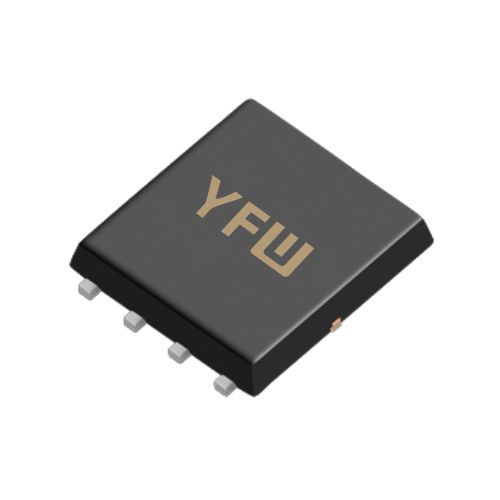In DC fast chargers, NMOS devices serve as critical switches in Power Factor Correction (PFC) circuits and
DC-DC converters. For instance, in PFC stages, NMOS transistors like the
YFW65R280 act as Boost circuit switches, elevating input voltage to stabilize the DC bus while minimizing harmonic distortion . Their high breakdown voltage (e.g., 650V for
YFW65R280) and low on-resistance (RDS(ON) ≤ 8mΩ at 20A) ensure efficient power transfer with minimal energy loss .
In
DC-DC conversion, NMOS transistors enable high-frequency switching (nanosecond-level transitions), which reduces the size of passive components like inductors and capacitors. This not only lowers system costs but also supports the miniaturization of charging modules . YFW’s NMOS lineup, such as the
YFW5N50, offers wide temperature operation (-55°C to +150°C) and high avalanche energy tolerance (250mJ), making them ideal for outdoor and high-power environments .
NMOS transistors facilitate precise control of charging currents and voltage levels. For example, in AC chargers, they act as load switches to manage power distribution between the grid and the vehicle’s battery. Their low gate threshold voltage (2.0–4.0V) allows seamless integration with microcontrollers, simplifying circuit design and reducing component count .
In bidirectional charging systems, NMOS devices enable energy flow in both directions (vehicle-to-grid, V2G). This capability is crucial for smart grids, where EVs can discharge stored energy during peak demand, enhancing grid stability . YFW’s YFW10N06MSI series, with low leakage current (≤100nA), ensures minimal standby power loss during idle periods, extending battery lifespan .
NMOS transistors are integral to safeguarding charging systems against faults. Their fast response to overvoltage, overcurrent, and short-circuit events is critical. For example, during a surge, NMOS devices can absorb transient energy while clamping voltage levels to prevent damage to sensitive components . YFW’s YFW2N65AD series, with robust avalanche ruggedness, provides reliable protection in harsh conditions .
Additionally, NMOS transistors in battery management systems (BMS) balance cell voltages by selectively discharging overcharged cells. This prevents thermal runaway and ensures uniform battery performance, a key safety feature in high-capacity EV batteries .
YFW’s NMOS portfolio combines cutting-edge design with rigorous testing. Our YFW65R280 employs advanced SGT (Shielded Gate Trench) technology, reducing RDS(ON) by 30% compared to traditional trench MOSFETs while suppressing EMI noise . This makes it ideal for high-frequency applications like LLC resonant converters .
For low-voltage BMS applications, our YFW2300MI series offers ultra-low leakage current (<100nA) and high input impedance, ensuring stable control signals and minimal static power consumption . These features align with the growing demand for energy-efficient EV charging solutions.
As EVs adopt 800V platforms and ultra-fast charging (600kW+), NMOS transistors will evolve toward higher voltage ratings (1200V+) and lower RDS(ON). YFW is actively developing next-gen devices to meet these demands, leveraging materials like silicon carbide (SiC) for enhanced thermal efficiency and switching speeds .
In conclusion, NMOS transistors are the backbone of modern EV charging infrastructure, driving efficiency, safety, and scalability. YFW’s commitment to innovation ensures our components remain at the forefront of this transformative industry. To explore our full range of NMOS solutions, visit
www.yfwdiode.com